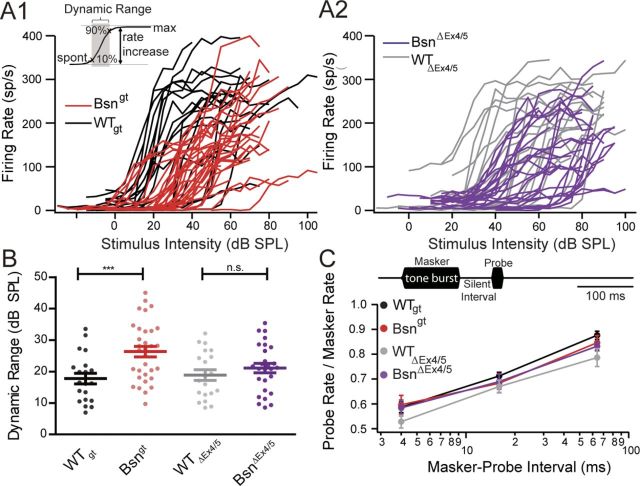Figure 8.
SGN responses in vivo: dynamic range and recovery from forward masking. A1, A2, Quantification of the overall spike rate in response to tone bursts presented at CF at varying sound intensities again demonstrate reduced spontaneous and sound-evoked spiking activity in Bsngt (red, n = 32) SGNs compared with WTgt (black, n = 20) and in BsnΔEx4/5 (violet, n = 27) compared with WTΔEx4/5 (gray, n = 20). Thresholds were not significantly different. Inset: Dynamic range is defined as the range of sound pressure levels in which the rate–intensity function exhibits a rate increase between 10% and 90% of the difference between spontaneous and maximal rate. B, Dynamic ranges of Bsn mutant SGNs were broader compared with WT (significant for Bsngt). C, Top, illustration of the stimulus paradigm for forward masking experiment: 100 ms masker tone burst and a 15 ms probe tone burst are separated by a silent interval of varying duration. Both tone bursts are presented at CF, 30 dB above threshold. The duration of a complete cycle is 500 ms. Bottom, firing rates in response to the 15 ms probe stimulus presented as the fraction firing rate in the first 15 ms of the masker response indicate that the time course of recovery from forward masking was similar in all genotypes (n = 29 for Bsngt, n = 16 for WTgt, n = 17 for BsnΔEx4/5, n = 12 for WTΔEx4/5).

